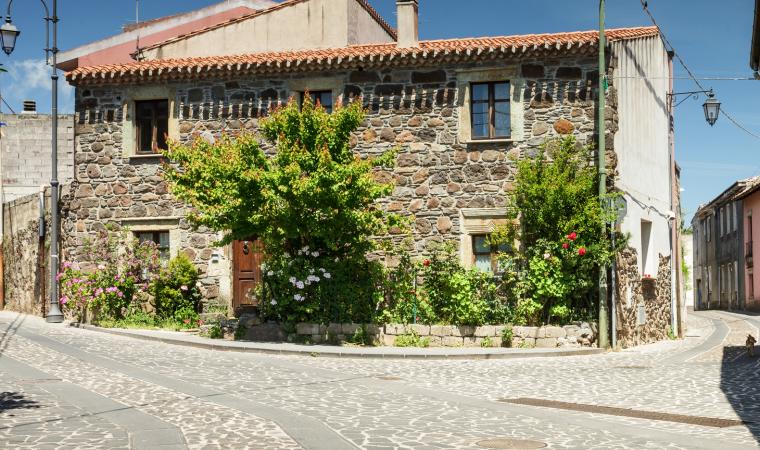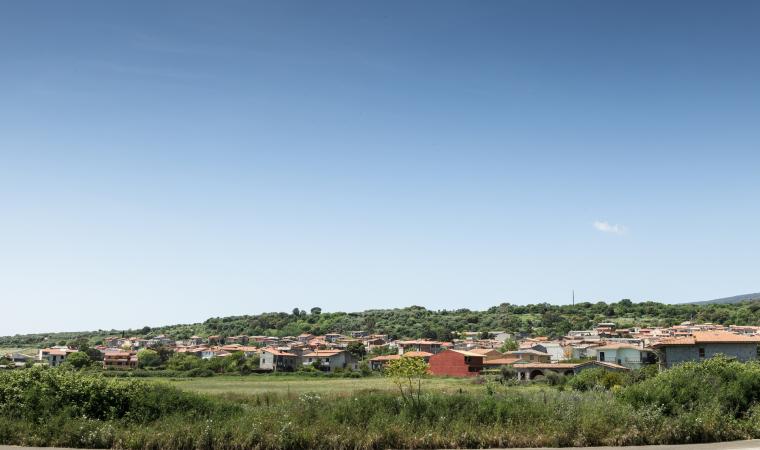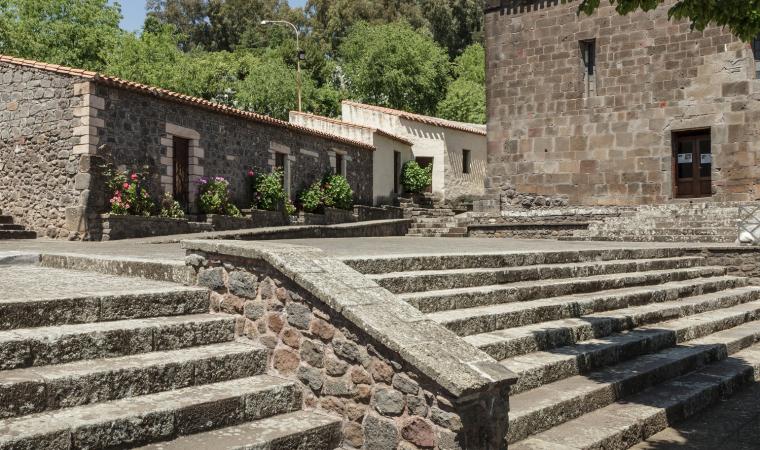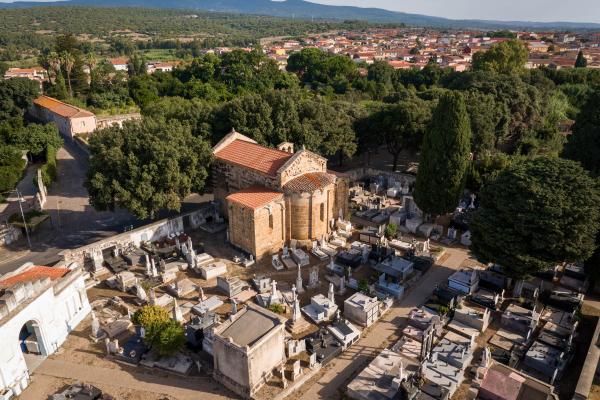Set in the foothills of the Montiferru chain, in a territory partly cloaked in oak woodlands and partly cultivated with olive groves, vineyards and orchards, particularly cherry trees, the town is not far from the Sinis peninsula. Bonacado is a town of around 1600 inhabitants 25 kilometres from Oristano; it takes its name and fame from two "jewels" of Romanic architecture: the sanctuary and basilica of Nostra Signora di Bonaccattu, the Sardinian name of the town that derives from Bonarcanto or Bonacranto, in turn a corruption of the Greek word Panachrantos (Immaculate). The two buildings form a complex that overlooks a delightful square in the historic centre, and are the oldest locations for the Marian cult on the island. The Byzantine sanctuary is one of the first Christian buildings on the island: the layout possibly dates from the 5th century, subsequently modified in the 7th and 8th centuries, when the first settlement was probably already beginning to form. It was built using material from the earlier Roman baths, of which an area of mosaic flooring has been found.

Town
A town to the north of Oristano, in central-western Sardinia with a long history, famous religious architecture and a fertile land, dotted with archaeological sites
A town to the north of Oristano, in central-western Sardinia with a long history, famous religious architecture and a fertile land, dotted with archaeological sites
See this place because...
In an evocative town with beautiful scenery and famous food products, you can admire an ancient sanctuary and an important basilica built in dark stone
Pictures and videos
You may also like
More attractions in the vicinity
Nearby hotels and accommodations

BONARCADO
0 km

BONARCADO
0 km

Bed and breakfast (rental rooms)
BONARCADO
0 km
















